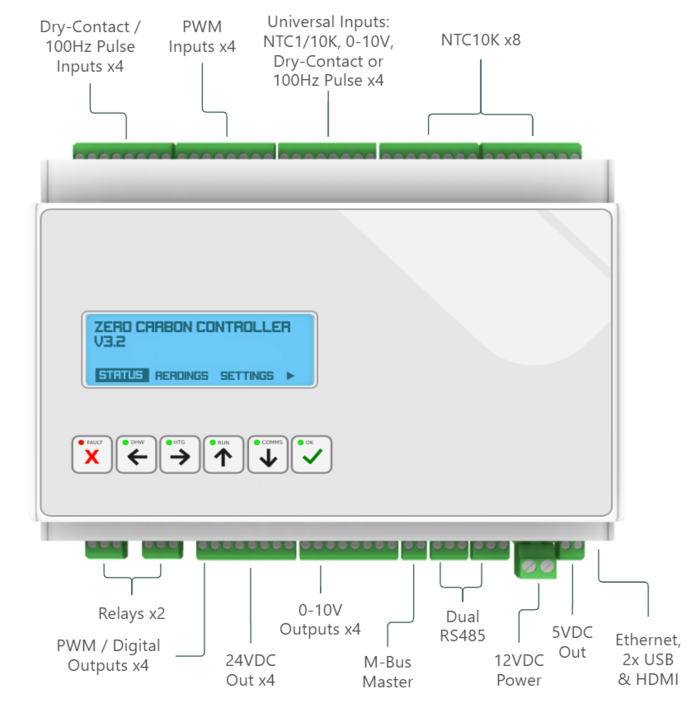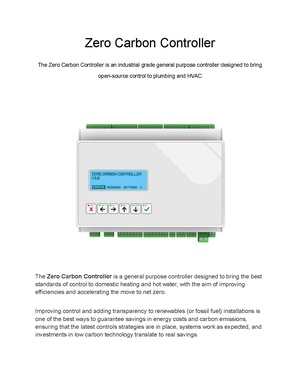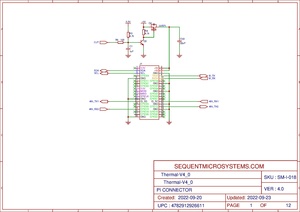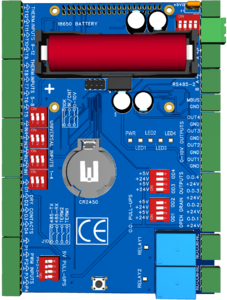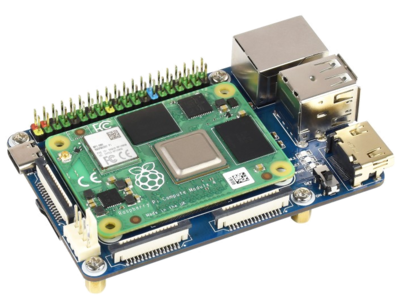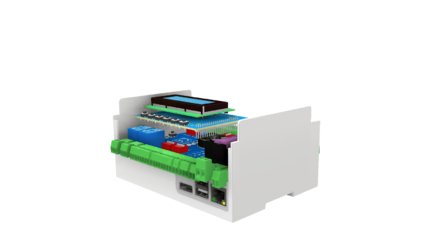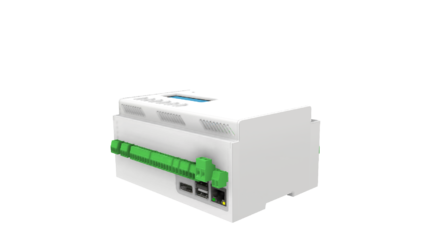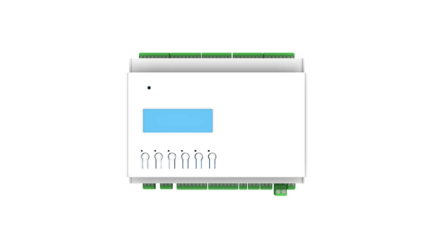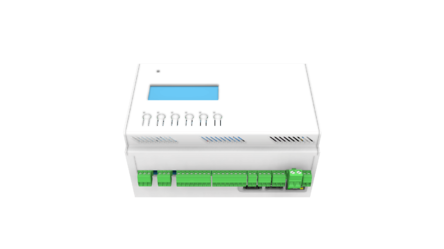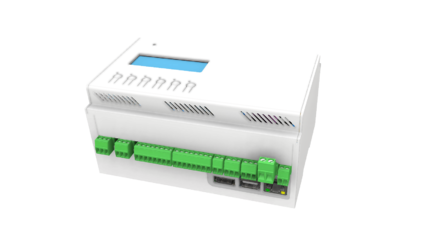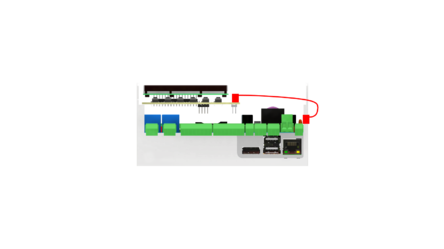Difference between revisions of "Heatweb BEMS Hat"
| Line 106: | Line 106: | ||
|} | |} | ||
== About == | == About == | ||
| Line 139: | Line 124: | ||
== Images == | |||
<gallery widths="450" heights="300"> | |||
File:Plumbingcontrollerv3b.png | |||
File:Heatweb BEMS Assembly V3 + Pi iso3.png | |||
File:Cm4-io-base-a-3.png|Raspberry Pi Compute CM4 Base Board | |||
</gallery><gallery widths="444" heights="333"> | |||
File:Heatweb BEMS enclosure assembly4.png | |||
File:Heatweb BEMS enclosure assembly3.png | |||
File:Heatweb BEMS enclosure assembly2.png | |||
File:Heatweb BEMS enclosure assembly1.png | |||
File:Heatweb BEMS enclosure assembly.png | |||
File:Heatweb BEMS enclosure assembly Sectional View.jpg | |||
File:Heatweb BEMS enclosure assembly RC2.png | |||
File:Heatweb BEMS enclosure assembly RC1.png | |||
</gallery> | |||
== Resources == | == Resources == | ||
Latest revision as of 14:10, 7 November 2022
| Feature | Specifcations |
|---|---|
|
Controller compatibility: |
Raspberry Pi, all models |
| Controller interface: |
Raspberry Pi header |
| 8 x thermistor inputs |
10k resistance temperature devices |
| 4 x universal inputs |
DIP selected mode |
| 4 x volt-free / pulse inputs |
100Hz pulse signals |
| 4 x PWM inputs |
DIP selected pull-up resistors (5V) |
| 4 x Digital PWM outputs |
Pull-down operation |
| 4 x 0-10v outputs | 10mA peak current |
| 2 x change-over relays | 10A @ 36V |
| 2 x RS485 |
Independent lines for Modbus or bespoke protocols |
| 1 x M-Bus |
For meter communications |
| Power Supply |
Nominal voltage: 12VDC |
| Battery support |
On-board rechargeable battery socket |
| Real time clock | Battery:CR2450 Coin Cell |
| General purpose input button | |
| 3 x user definable LEDs | |
| Fan control and connector | |
| Dimensions |
Length: |
About
The Heatweb BEMS Hat runs from a 12v dc supply, generating 5v for the board, 24v for valves, and 36v for M-Bus, using on-board dc-dc converters backed up by a rechargeable battery. A coin cell is used to power a real-time clock.
WiFi, Ethernet and Bluetooth are provided by the parent controller board.
A number of the inputs are universal, and can be switched between NTC, 0-10v, or volt-free / pulse inputs (jumper selected). This ability to alter the hardware setup increases versatility significantly.
The addition of M-Bus allows us to connect to heat meters as standard, making the board a stand alone solution to open-sourcing meter data, and to use meter data within control logic.
The battery backup allows us to safely shut-down all valves and the controls when power is removed. This overcomes a common problem with HVAC systems, where valves typically remain open, destroying network performance.
Schematic
